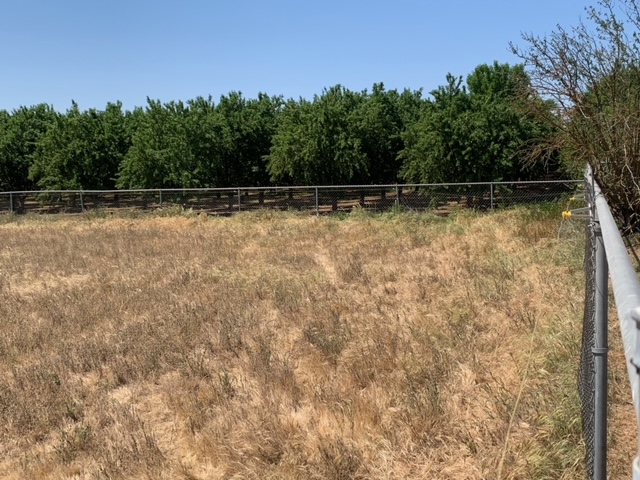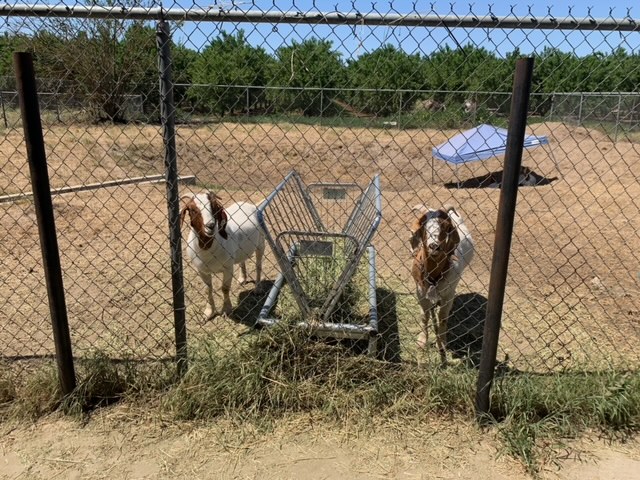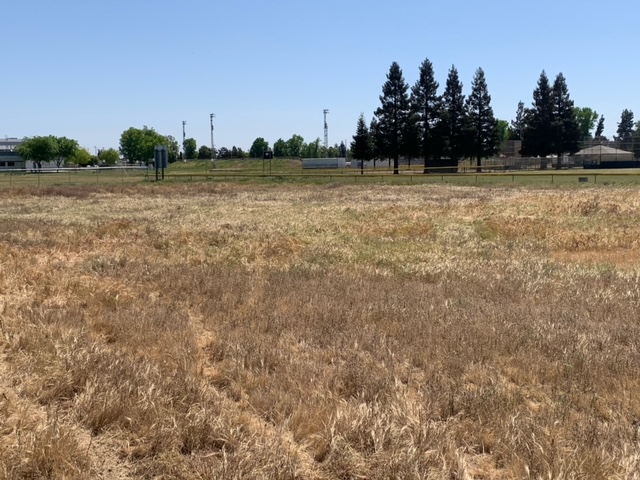
The news that the Denair Unified School District has been awarded a $20,000 grant from the state to begin a Farm to Fork program at the high school opens up numerous exciting possibilities.
FFA and special ed students at Denair High — under the guidance of ag teachers Holli Jacobsen and Taylor Doo – soon will begin turning a dusty patch of ground into a one-acre garden. The fruits and vegetables grown in it will funnel straight into the district’s food program.

Broccoli and cauliflower. Tomatoes, peppers and beans. Cucumbers, onions and a variety of melons. Even yams and sweet potatoes. All are options for the new garden.
“All I know, if they send us stuff, I’m going to use it — in the actual entrée, as a side, in the salad bar.” said Kim Fuentez, the food services coordinator who is responsible for preparing thousands of breakfasts and lunches each day.

Jacobsen applied for the grant in February and learned last week from the state Department of Food and Agriculture that Denair’s program had been approved. The idea is to create a permanent, sustainable garden in the northwest corner of the high school property, behind some of the athletic fields and next to an area where five breeding goats currently reside.
The first steps, Jacobsen said, will be to clean up the space and then create a design for the garden. Irrigation needs to be routed to the area and planter boxes built and installed. A shed to keep tools in would be nice. So would a sink or cleaning station. She also wants to start a compost pile to generate organic material to improve the soil.
Jacobsen expects as many as 75 student volunteers to have an active role in planting, weeding, maintaining and harvesting the garden. One student intern will be hired to coordinate the work. In the future, members of the community also will have a chance to contribute.
The first plants could go into the ground by August, with locally sourced fruits and vegetables appearing on Denair menus shortly thereafter.
“It’s going to take some research into what kind of crop we can get late summer or early fall,” Jacobsen said. “In the winter, can grow green vegetables – broccoli, cabbage, spinach, mixed greens.”
Fuentez imagines multiple possibilities over the course of a year. Tomatoes for salsas, sauces and salads. Melons for snacks and desserts. Onions for multiple purposes. Green beans, broccoli and cauliflower to round out hot lunches.
“If they do cucumbers, tomatoes and red onions, we can definitely use them in salads,” she said. “Romaine lettuce. Our kids miss their big salads. If they could get us watermelon or cantaloupe or honey dew melons, that would be great.
“This also could be an interesting way to introduce kids to something different like yams or sweet potatoes. Kids may not be used to seeing them in something other than a holiday meal. … I would love bell peppers. Our high school kids have a little more of a mature palette, so we can introduce something like stuffed bell peppers.”
The grant requires at least 1,000 pounds of food be grown and sent to the food program by this time next year, a benchmark that Jacobsen is confident can be attained.
“One thousand pounds will add up quickly,” she said. “If we start tomatoes in our greenhouse now, we could have tomatoes in the ground late summer.”
In addition to the locally produced fruits and vegetables, Fuentez also is excited by the opportunities to educate students about where food comes from and how it’s grown.
“We’re just looking forward to showing the full cycle of what happens with food,” she said. “It’s a unique opportunity for our school district. I’m looking forward to it.”
Part of the grant also requires that wildflowers and plants that provide forage for bees and other native pollinators be incorporated into the garden. Jacobsen said it’s possible that hives will be installed to produce honey.
Eventually, time will be scheduled so that adults and other community members will be able to participate in the project.
In the meantime, Jacobsen said that people who would like to donate seeds, starter plants or other materials should contact her at hjacobsen@dusd.k12.ca.us.
